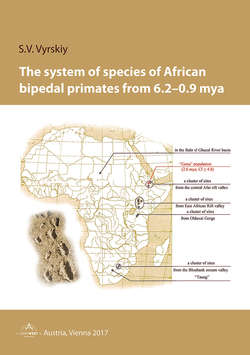Описание книги
Here we report the establishment of a family relation system between the species of African bipedal primates observed in deposits from 6.2 to 0.9 million years ago (mya). For this purpose, the author presents a single method of assigning diagnostic “weight” when conducting character assessment of fossilized remains and has also formulated several equations and ratios that make use of morphometric measurements and can be used to predict the crucial parameters of paleontological individuals, such as body weight, endocranial volume, and cerebral index, and identify their diet. Having simultaneously considered all the morphometric descriptions of the bone remains of bipedal primates and, by a single method of character evaluation, having established the degree of their affinity, the author reconstructed the phyletic lines, uniting almost all diagnostically significant samples and systematized paleoanthropological material of the 6.2–0.9 mya period. The evaluation of the phyletic-associated fossils, in compliance with the Biological Species Concept (E. Mayr), revealed the existence of only two species of bipedal primates in the African continent at the beginning of the period under consideration. Later, a new, third, species emerged, the formation of which correlated with the exponential increase in the cerebral index and the advent of the first stone tools.
